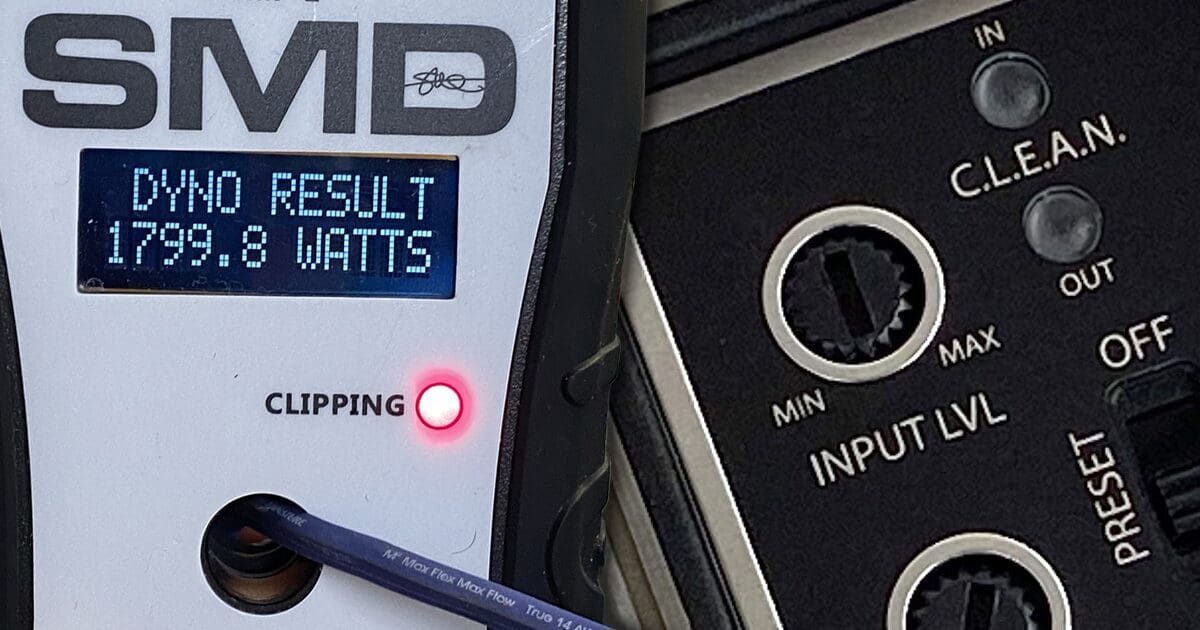Day after day, I read posts on Facebook and Reddit about do-it-yourselfers trying to set their car audio subwoofer amplifiers so that they don’t make full power. The typical description goes something like: “I have a 700-watt amp and a 500-watt sub, so I set the gain so the amp so it will only produce 31.6 volts.” There’s usually something extra like “the radio was set to ¾” added for good measure. The post often finishes with “it didn’t work” or “it’s not very loud.” While the process seems simple and the raw math works out, the results never seem to deliver what’s expected. Let’s look at a few reasons why.
Check Your Frequency Response
The correct test tone frequency to use to set the sensitivity of a subwoofer amplifier depends on the frequency response of the signal going to the amp. If the installer has applied any equalization to the audio signal using the tone or loudness controls on the radio, through a digital signal processor or by the bass boost control on the amp, then the frequency response of the audio signal exiting the amp needs to be measured. The amp will need to be configured at whatever frequency represents the highest voltage.
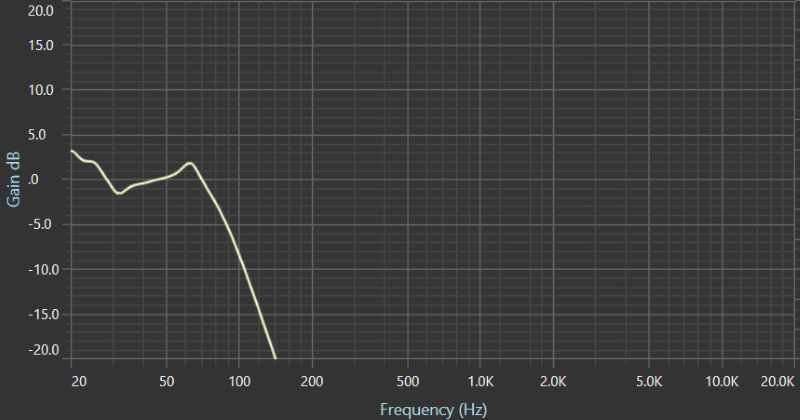
Subwoofers Aren’t Resistors
If you buy a 4-ohm subwoofer, you’ll find that it likely measures around 3.2 to 3.5 ohms on a DC ohmmeter. If you have someone do an impedance sweep, it will vary from about those same numbers up to 30 or 40 ohms around the resonant frequency of the system. If your subwoofer amplifier is current-limited, then you need to check power output at the lowest impedance as that’s where the amp will clip first. Unfortunately, consumers and most car audio shops don’t have the equipment to determine whether the maximum output of an amplifier is limited by current or voltage.
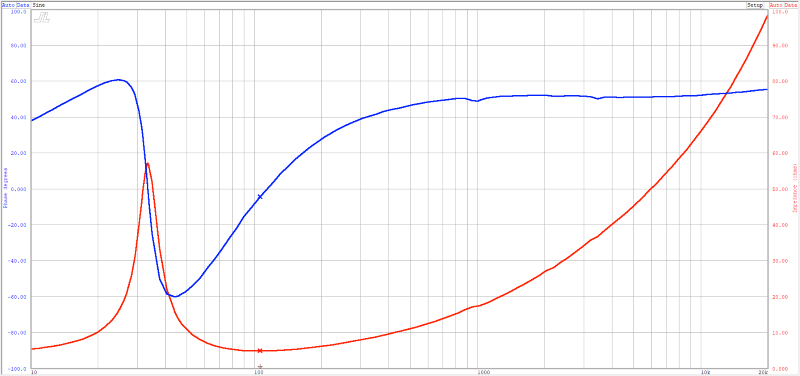
Calibration Tone Levels and Gain Overlap
If you use a test tone that’s stored at the highest possible recording level on a CD or USB stick (called 0 dB), then you also need to set the volume control on the source unit and max out any remote level controls on the amp. If you don’t, you can turn the volume up higher, which will result in the amp trying to produce more voltage – which equates to producing more power, and you run the risk of damaging your subwoofer.
Is Electrical Power the Subwoofer’s Limiting Factor?
Here’s something else to consider: Different enclosure designs have different benefits and drawbacks. Some offer excellent efficiency. Others offer excellent cone excursion at very low frequencies. If your subwoofer or subwoofers aren’t installed in an enclosure that was designed based specifically on the Thiele/Small parameters of the drivers you are using, you may have an issue with the sub bottoming-out at high output levels. Not only does this sound terrible, but it can damage the voice coil former quickly and render the subwoofer non-functional.
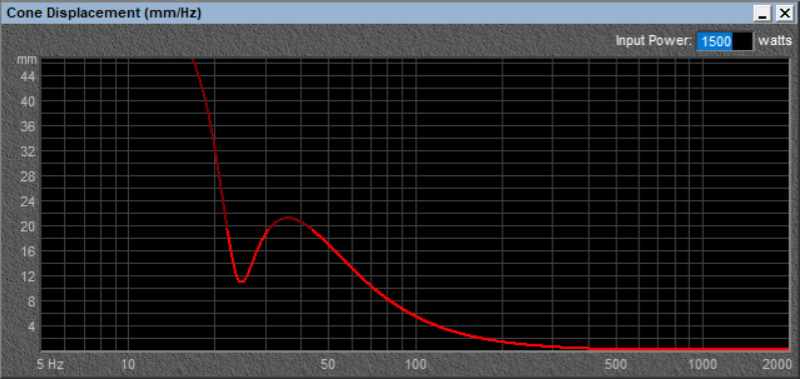
In the graph above, this 10-inch subwoofer will exceed its 19 mm Xmax specification when driven with 1,500 watts of power and frequencies between 30.74 and 44.1 Hz, and all frequencies below 22.4 Hz. The enclosure volume or tuning needs to be altered, or the supplied power will need to be decreased.
Music Isn’t a Test Tone
The last issue we’ll talk about is the fact that music doesn’t contain constant output levels. There are loud parts of songs and quiet parts. Some have lots of bass and some have very little. If you want your car audio system to sound good and last, it needs to have enough subwoofers and speakers so that it will play loudly enough without pushing any single driver to its thermal or physical limits. In fact, you don’t want to push speakers anywhere near their maximum capabilities. A lot of excursion produces a lot of distortion, be it from a subwoofer, woofer or a large midrange speaker.
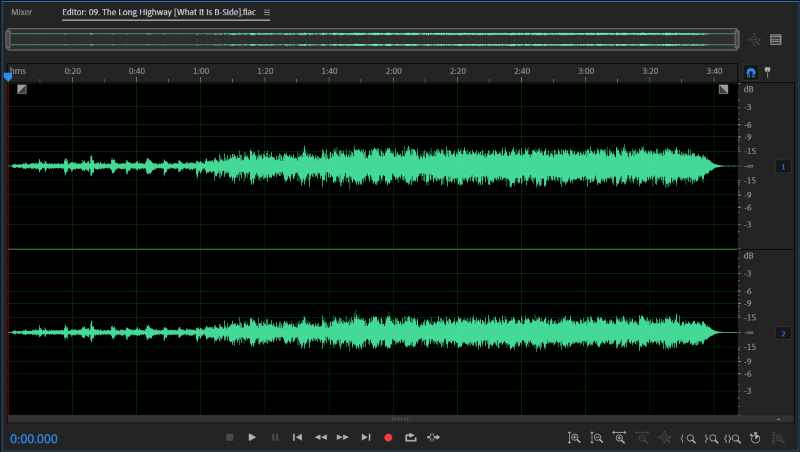
The problem is that not all music is recorded at a peak level equivalent to 0 dB. It should be, but it isn’t. Say you want to play some older music that was recorded at a lower volume level. You need more volume to make it as loud as music recorded at 0 dB. We call this gain overlap, and it refers to how much is left on the volume control when music recorded loudly starts to distort.
Let’s say you set your audio system to have 6 dB of gain overlap from the source unit. The amp is set to produce the aforementioned 31.6 volts of output using the 0 dB test tone. Cool, right? Say an epic track comes on the radio and you forget about the 6 dB of overlap. You crank the volume and the radio produces extra output. Assuming the sound source reaches 0 dB, your amp will try to make 2,000 watts of power. It likely can’t, so it will start to clip and distort. It will also start to damage your subwoofer. What is the right amount of overlap? That depends on the music you listen to and how judicious you are with limiting the volume on the system.
Design Your Subwoofer System to Last
If you’re determined to design a car audio system that’s effectively indestructible, then choose subwoofers that are rated for twice the maximum output capability of the amplifier. If you have a 500-watt amp, then it will be nearly impossible to overdrive a subwoofer rated for 1,000 watts if it’s installed in the correct enclosure. Of course, you’re going to spend a lot of money on these drivers and won’t get to use all of their capabilities.
More importantly, buying any speaker based purely on its power rating is about the worst suggestion anyone could follow. There are subwoofers rated for 400 or 500 watts that sound infinitely more accurate than most rated for 700 to 1,000 watts. Sound quality has nothing to do with power ratings, other than a driver rated to handle a lot of power might suffer from less power compression if pushed hard.
This Car Audio Stuff Is Complicated, Isn’t It?
Are you getting the impression that it’s difficult to consider every possible factor when designing, integrating and calibrating a car audio system? Trying to set the gains or sensitivity controls on an amplifier to limit power to an exact level is pretty much impossible. If you need to protect speakers with limited power handling, just keep the volume down. If you want to play your system at higher volume levels, choose speakers that can handle more power and convert that into more output.
